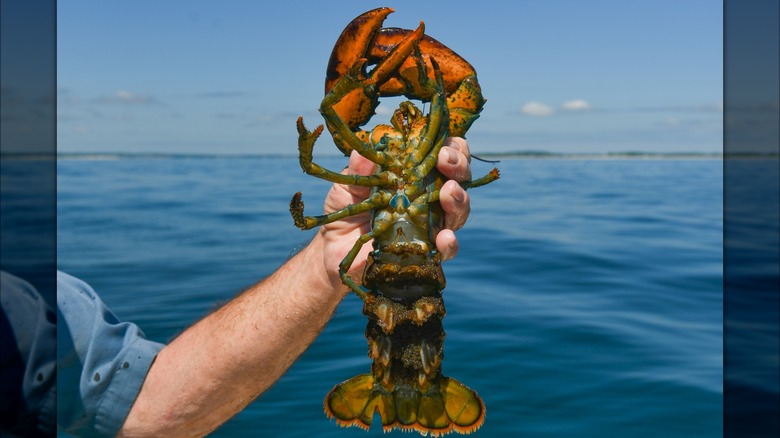Lobster Roe Vs Caviar: What's The Difference?
For many people, lobsters are considered a delicacy. Whether a restaurant serves lobster tails with lemon and melted butter or you incorporate the meat into a dish like lobster mac and cheese, the mild, fishy flavor and chewy texture are loved for good reason. However, there's a part of the lobster that's often overlooked that may just give caviar a run for its money.
Caviar is notoriously seen as a symbol of wealth and class, with the cured fish eggs appearing at fancy dinner parties or served at Michelin-star restaurants. Typically, caviar is served as a garnish or spread on crackers and paired with an expensive champagne to complement the salty fish flavor.
Interestingly, warm and cold water female lobsters also contain eggs (roe), which were historically seen as a gourmet food. Although they have similarities, lobster roe cannot be considered caviar due to the family of crustaceans it comes from.
Lobster eggs are viewed differently
Lobster roe refers to the unfertilized eggs of the crustacean. To find it, you simply need to look underneath the tail. Uncooked or raw lobster roe will be black and is usually considered risky to eat. Black roe typically means your lobster tail is not finished cooking. The eggs should be a vibrant red when edible.
While caviar must come from a sturgeon and go through a salt brine to earn its name, lobster roe is quite versatile in its processing. You can simply eat the row as you're enjoying the tail, or you can save the eggs and add them to butter or sauces.
One Reddit user even purchased raw lobster roe and used it in a pasta recipe instead of eggs, which sounds like a seafood dish you need to try before you die. Amazingly, the noodles turned from green to a bright orange color once the pasta was cooked. Ultimately, there are many ways to cook and eat lobster roe, whereas true caviar follows a much more rigid set of guidelines.
Not all fish eggs are considered caviar
For most of the world, labeling an item as "caviar" means the eggs can only be sourced from the wild sturgeon fish species of the Acipenseridae family. These fish are traditionally found in specific regions of the world, such as Italy and Asia, as well as the Black Sea and Caspian Sea.
Understandably, the laborious nature of retrieving these eggs makes them a pricey addition to your dinner plate. If you've ever wondered how caviar is harvested, it's not the most appetizing process. To retrieve the roe, the fish must be sliced open, and the sacks of eggs extracted from the ovaries. Due to the popularity of caviar and the years it takes for a sturgeon to produce these eggs, "no-kill harvesting methods" have risen to curb overfishing.
There are also some more affordable varieties of caviar. However, it's important to recognize the specific labeling. Throughout most of the world, real caviar must be sourced from the unfertilized eggs of a sturgeon and cured in salt. However, the United States allows the term "caviar" to be used on any cured fish roe, including that of salmon, as long as it specifies the fish it comes from. Therefore, if you see an item labeled "lobster roe caviar" in the U.S., know that other countries would find that false or misleading.


